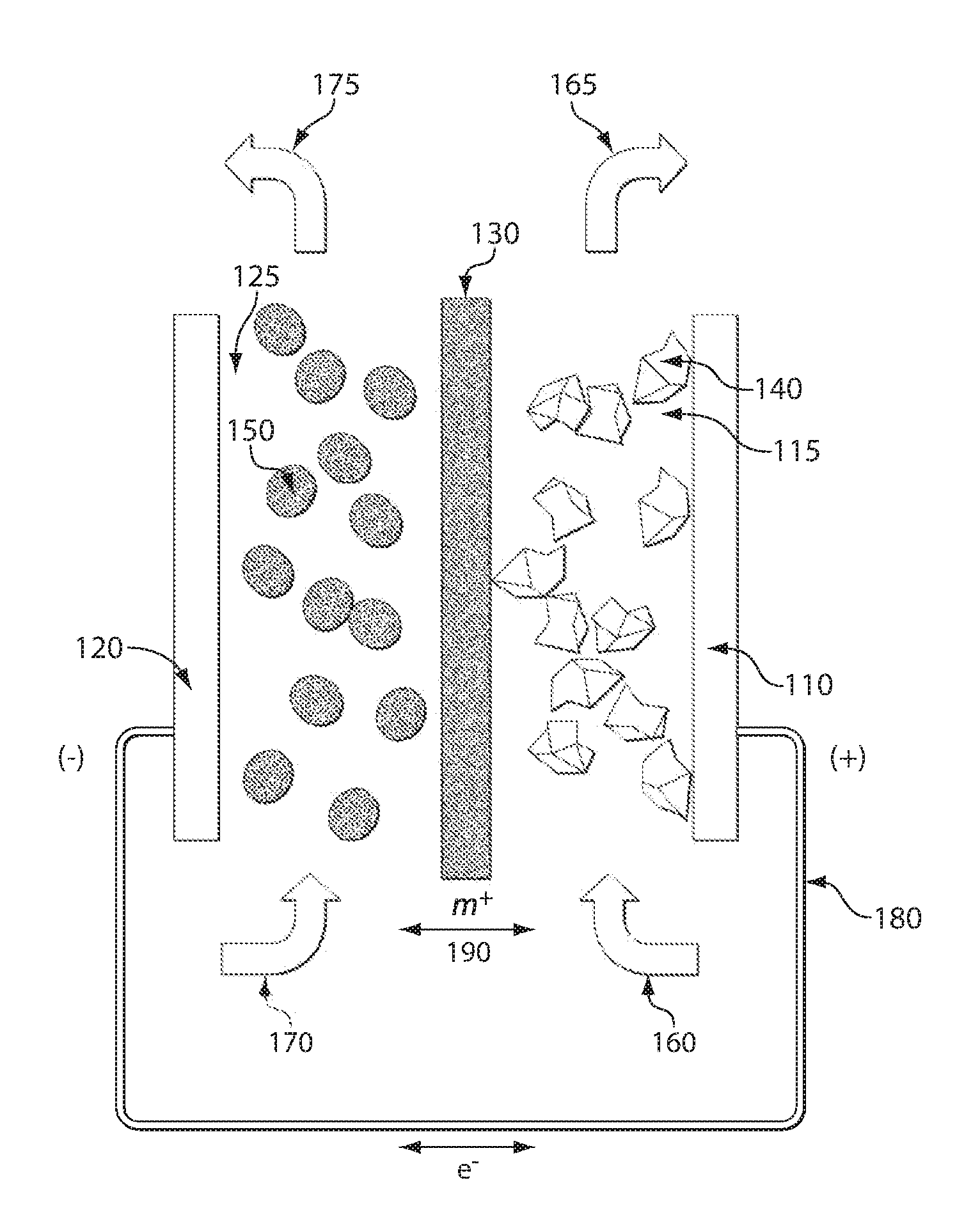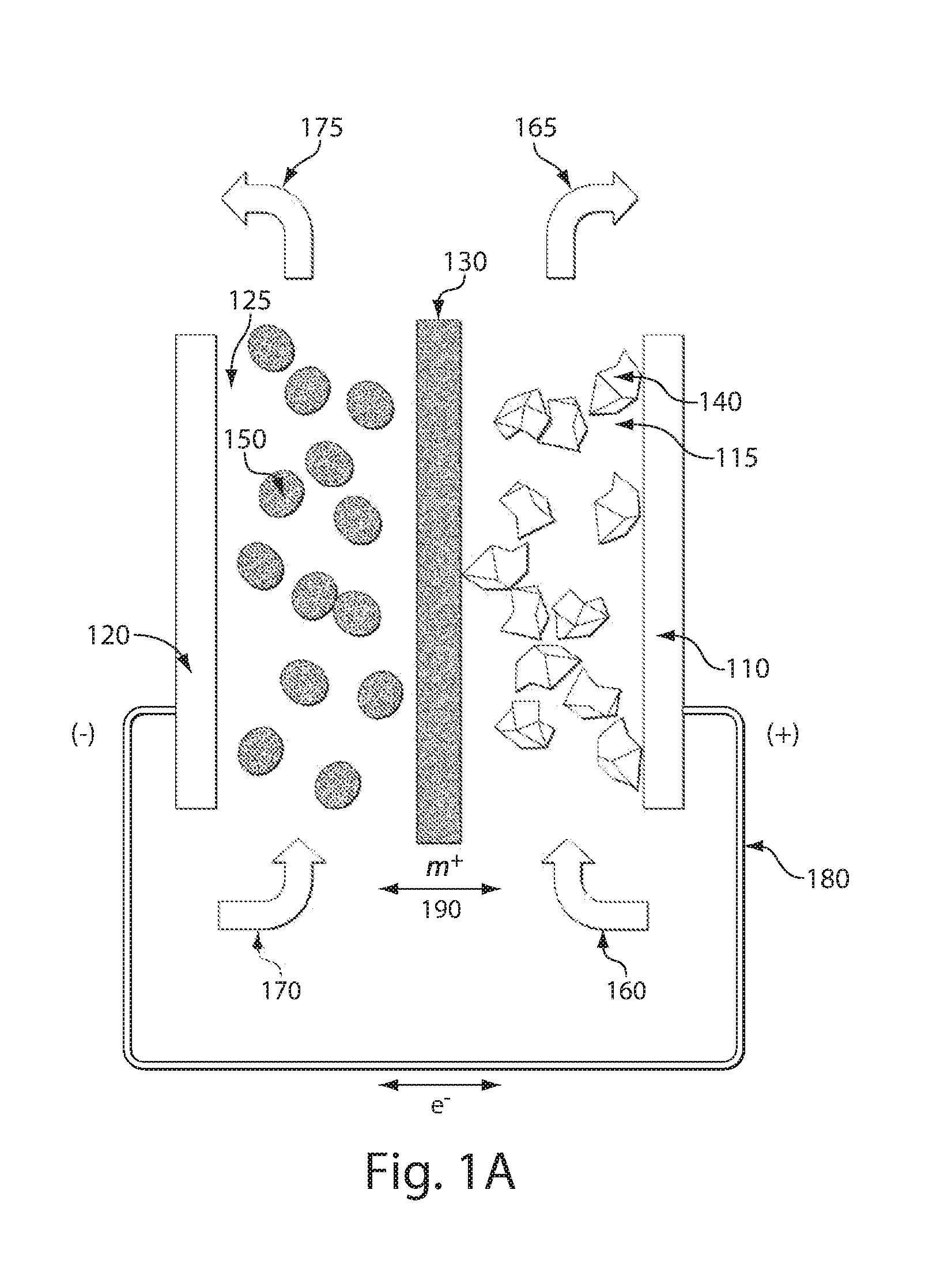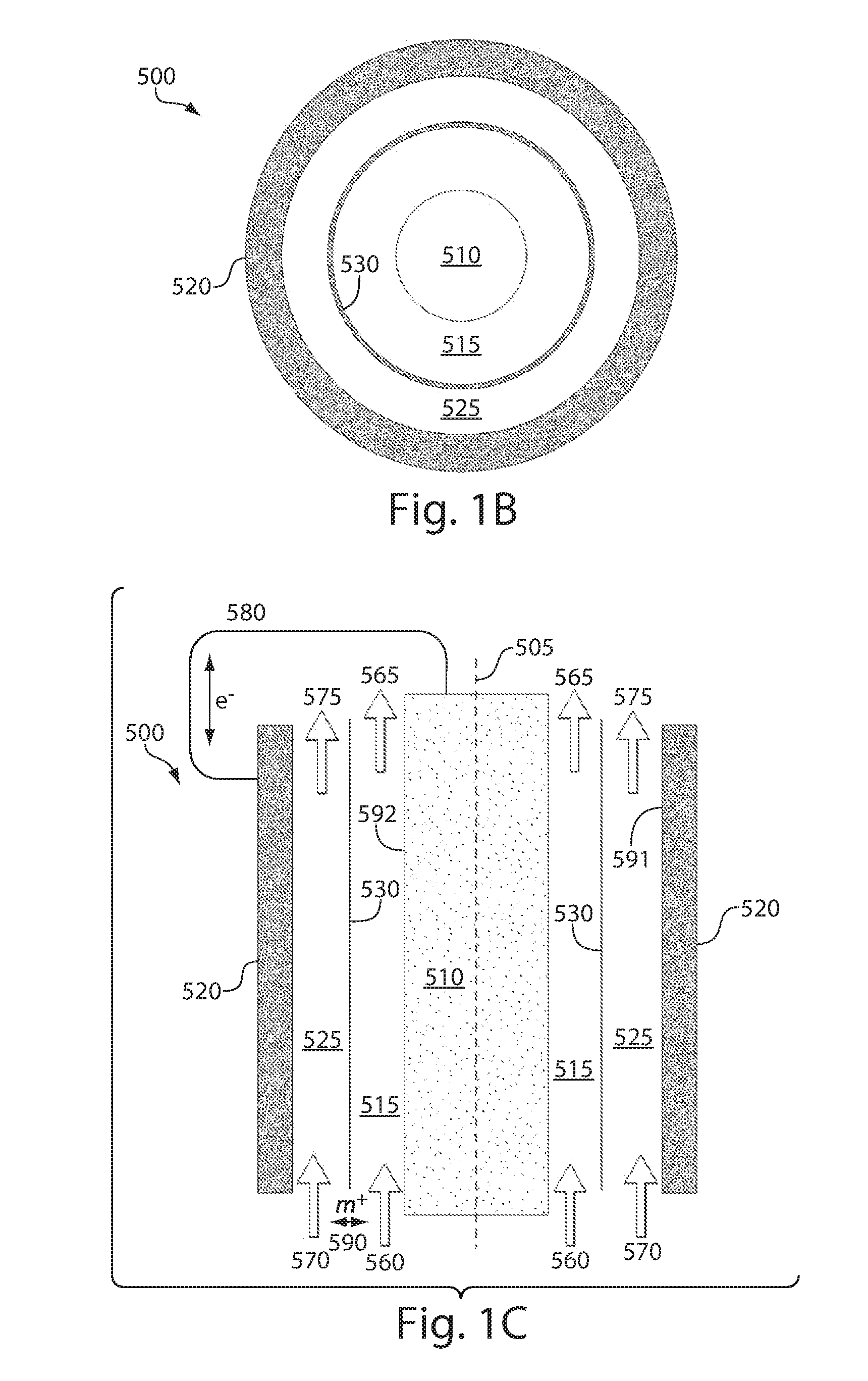High energy density redox flow device
a redox flow and high energy density technology, applied in the field of high energy density redox flow devices, can solve the problems of reducing the energy and power density of the device, unable to sustain the charge imbalance, and limited current extraction rate,
- Summary
- Abstract
- Description
- Claims
- Application Information
AI Technical Summary
Benefits of technology
Problems solved by technology
Method used
Image
Examples
example 1
Semi-Solid Lithium Redox Flow Battery
[0222]An exemplary redox flow cell 200 for a lithium system is shown in FIG. 2. In this example, the membrane 210 is a microporous membrane such as a polymer separator film (e.g., Celgard™ 2400) that prevents cathode particles 220 and anode particles 230 from crossing the membrane, or is a solid nonporous film of a lithium ion conductor. The negative and positive electrode current collectors 240, 250 are made of copper and aluminum, respectively. The negative electrode composition includes a graphite or hard carbon suspension. The positive electrode composition includes LiCoO2 or LiFePO4 as the redox active component. Carbon particulates are optionally added to the cathode or anode suspensions to improve the electronic conductivity of the suspensions. The solvent in which the positive and negative active material particles are suspended is an alkyl carbonate mixture and includes a dissolved lithium salt such as LiPF6. The positive electrode compo...
example 2
Semi-Solid Nickel Metal Hydride Redox Flow Battery
[0223]An exemplary redox flow cell for a nickel system is shown in FIG. 3. In this example, the membrane 310 is a microporous electrolyte-permeable membrane that prevents cathode particles 320 and anode particles 330 from crossing the membrane, or is a solid nonporous film of a proton ion conductor, such as Nafion. The negative and positive electrode current collectors 340, 350 are both made of carbon. The negative electrode composition includes a suspension of a hydrogen absorbing metal, M. The positive electrode composition includes NiOOH as the redox active component. Carbon particulates are optionally added to the cathode or anode suspensions to improve the electronic conductivity of the suspensions. The solvent in which the positive and negative active material particles are suspended is an aqueous solution containing a hydroxyl generating salt such as KOH. The positive electrode composition is stored in positive electrode stora...
example 3
Reference Electrode Monitored Redox Flow Battery
[0224]An exemplary redox flow battery using a reference electrode to optimize cell performance is shown in FIG. 4. The cell includes two membranes 410, 415. Reference electrodes 420, 425, 430 are positioned between the two membranes 410, 415 on a face opposite that of the electroactive zones 440, 445 where positive electrode redox flow composition 442 and negative electrode redox flow composition 447 flow, respectively. The cell also includes negative and positive current collectors 450, 460, respectively.
[0225]The potential at each reference electrode 420, 425 and 430 can be determined and are assigned a value of φ1, φ2 and φ3, respectively. The potentials at the working electrodes (current collectors) 450, 460 can also be determined and are assigned a value of W1 and W2, respectively. The potential differences of the cell components can be measured as follows:
(W1−W2)=cell voltage
(W2−φ3)=potential at cathode
(W1−φ3)=potential at anode
(...
PUM
| Property | Measurement | Unit |
|---|---|---|
| Volume | aaaaa | aaaaa |
| Volume | aaaaa | aaaaa |
| Volume | aaaaa | aaaaa |
Abstract
Description
Claims
Application Information
 Login to View More
Login to View More - R&D
- Intellectual Property
- Life Sciences
- Materials
- Tech Scout
- Unparalleled Data Quality
- Higher Quality Content
- 60% Fewer Hallucinations
Browse by: Latest US Patents, China's latest patents, Technical Efficacy Thesaurus, Application Domain, Technology Topic, Popular Technical Reports.
© 2025 PatSnap. All rights reserved.Legal|Privacy policy|Modern Slavery Act Transparency Statement|Sitemap|About US| Contact US: help@patsnap.com



